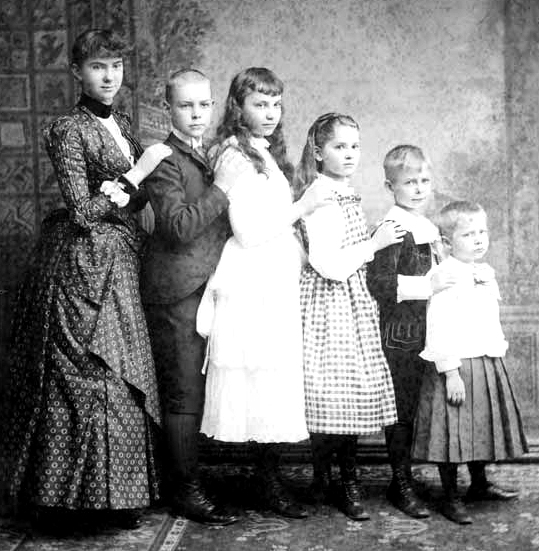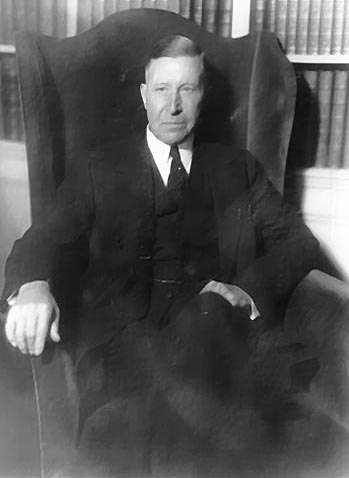Mission Statement
The Miller Institute is "dedicated to the encouragement of creative thought and the conduct of research and investigation in the field of pure science and investigation in the field of applied science in so far as such research and investigation are deemed by the Advisory Board to offer a promising approach to fundamental problems."
History

grand-nephew of Mary Sprague Miller.
Adolph C. Miller was born in San Francisco on January 7, 1866. He entered the University of California in 1883 and was active throughout his student life. Upon graduation, he was awarded the Harvard Club Prize for graduate study at Harvard and then continued his studies in Paris and Munich. Following his return to the United States, he served as an instructor in Economics at Harvard before being appointed Assistant Professor of Political Science at the University of California at Berkeley, in 1890. The following year he accepted an Associate Professorship in Political Economics and Finance at Cornell University. After one year at Cornell, however, Miller was persuaded to move to the University of Chicago where he was given a full Professorship of Finance. In 1895, Adolph Miller married Mary Sprague (pictured on the left in the photo below), the eldest child of Otho Sprague, a prosperous Chicago businessman. In 1902, President Benjamin Ide Wheeler convinced Miller to return to Berkeley as Flood Professor of Economics and Commerce and to develop the newly established College of Commerce (the forerunner to the present Haas School of Business). After eleven years of service to the University of California, Miller resigned to become the United States Assistant Secretary to the Interior under his former classmate, Franklin K. Lane. The following year the Federal Reserve System was established and President Wilson appointed Miller to its Board of Governors, a position he held for twenty-two years under five presidents (Wilson, Harding, Coolidge, Hoover and Franklin Roosevelt).
Despite their residence in Washington, the Millers' ties to Berkeley remained strong. They donated 250 acres of the Locatelli Ranch in the Santa Cruz Mountains near Boulder Creek to the University to be used as a center for faculty conferences and recreation. Later, two additional gifts of $10,000 each were made to support the property. In 1937, the University bestowed honors on its benefactor by asking Adolph Miller to deliver the first Bernard Moses Memorial Lecture. In 1940, he was awarded an honorary LL.D. degree with the following citation by President Sproul: "Native son of California; graduate of this University, and the first head of its Department of Economics; for twenty years a member of the Federal Reserve Board, contributing in a unique and invaluable way to its deliberations through his keen mind, sound thinking, and profound mastery of economic theory."

In 1943, Adolph C. and Mary Sprague Miller entered into a trust with the Board of Regents of the University of California to establish an institute "dedicated to the encouragement of creative thought and conduct of research and investigation in the field of pure science." Upon the death of Dr. Miller on February 11, 1953, a fund in the amount of $2,856,566 became available to the University. The "Statement Establishing the Institute for Basic Research in Science" was submitted to the Regents on October 14, 1955 and was subsequently approved. The organization of the Institute began. On January 10, 1957, Mrs. Miller died and an additional $2,159,945 became available. At that time the names of the donors became public and the Institute was designated: "The Adolph C. and Mary Sprague Miller Institute for Basic Research in Science". The first appointments to the Miller Institute were awarded in January 1957.
Organization

Mary Sprague, Adolph Miller
The Miller Institute is guided by the "Statement Establishing the Institute for Basic Research in Science" and the "Deed of Trust". An Advisory Board is charged with overseeing the Institute. The President of the University is the official President of the Advisory Board, but since the time of Clark Kerr that role has been delegated to the Chancellor of the Berkeley campus. Four of the eight Advisory Board members are faculty members of Berkeley science departments. They constitute the Executive Committee, charged with carrying out the policies determined by the Advisory Board. One member of the Executive Committee is designated as the "Executive Director of the Institute" and "Vice Chairman of the Advisory Board". The remaining board members, appointed in accordance with trust stipulations, are from outside of the University of California and are selected from nominations submitted by the members of the Advisory Board.
The Miller Institute is committed to maintaining an atmosphere free of harassment, exploitation or intimidation. We adhere to all policies of the University of California. Any member of the Institute should feel comfortable to alert the Miller Institute of any unacceptable behaviors and feel confident that appropriate measures will be taken.
The Story of the Miller Knot
In 1985, Miller Fellow Steven A. Wasserman, his Berkeley faculty host, Nick Cozzarelli, and colleagues published a paper in Science entitled, "Discovery of a Predicted DNA Knot Substantiates a Model for Site-Specific Recombination." The paper included an electon micrograph of a single length of double-stranded DNA in six-noded knot. This was photographed at x40,000 primary magnification.
During a talk by Cozzarelli, Nobel Prize winner, Ilya Prigogine was in the audience. He mentioned that in his private art collection he had a 3rd Century A.D. Roman bas relief which showed the identical knot form described in the paper. A photograph of this bas relief became the cover art for the July 12, 1985 issue of Science.
That same year, the Miller Institute was publishing its 30 Year Report and Executive Director Robert Ornduff used the knot on its cover. It was not used again until the early 1990s, when it was rediscovered among many potential logo options and was selected to thereafter be used as the Miller Institute's logo.
In 1999, Visiting Miller Professor and Knot Theorist, Dror Bar-Natan, dubbed the knot "The Miller Knot". It has since gained a bit of notoriety:
- Discovery of a predicted DNA knot substantiates a model for site-specific recombination. Science 12 Jul 1985: Vol. 229, Issue 4709, pp. 171-174.
- Miller Institute Knot Logo
- The Knot Atlas
- Miller Institute Knot
Program Descriptions
More Miller Information
- Miller Institute Brochure
- Miller Institute Wikipedia
- Miller Research Fellows Wikipedia
- In the News...
- Contact Us
- Make a Gift







